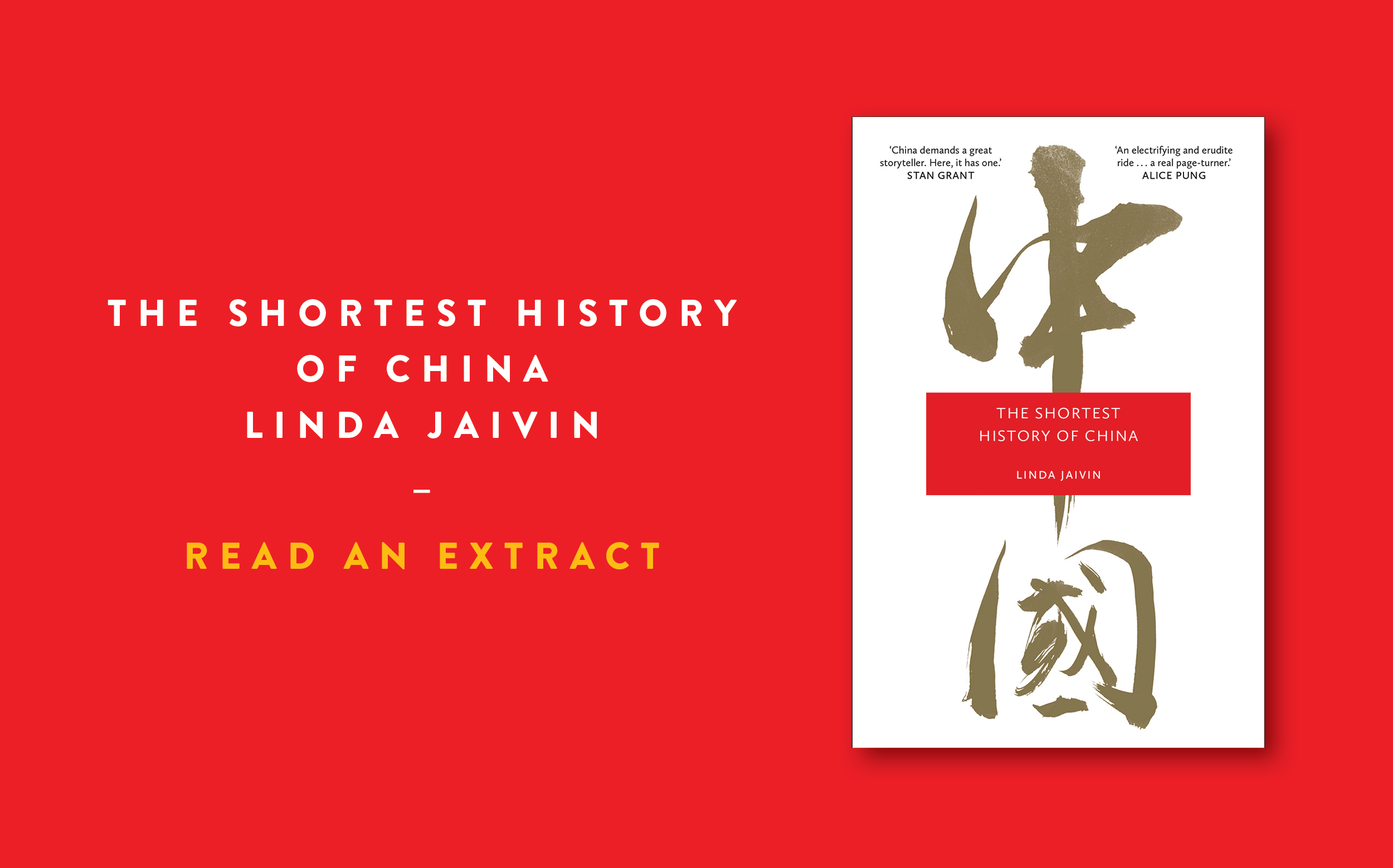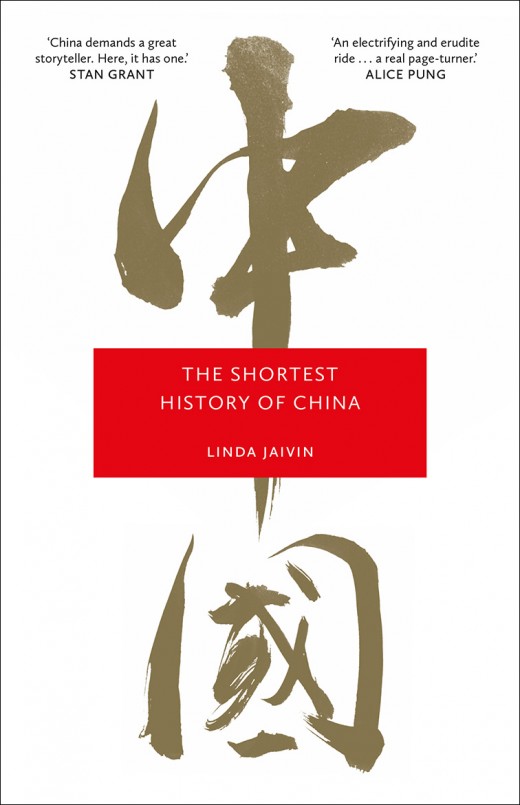News

News >
Read an extract: The Shortest History of China
A pacy history of China that can be read in an afternoon, but will transform your perspective for a lifetime. Read the introduction to The Shortest History of China.
There is no Chinese curse that goes ‘may you live in interesting times’. In any case, it would be redundant. Chinese history simmers with larger-than-life characters, philosophical arguments and political intrigues, military conflicts and social upheavals, artistic invention and technological innovation. It progresses in twists, turns, leaps and returns. Chinese historical records are long and deep, stretching back at least 3500 years. Their themes and lessons, as well as the memories of wounds and triumphs, pulsate under the surface of contemporary Chinese life, language, culture and politics. The increasingly key role the People’s Republic of China (PRC) plays in global affairs makes an awareness of this history essential, for it is the key to understanding China today.
Take, for example, the insistence of the Chinese Communist Party (CCP) that Hong Kong and Táiwān, along with Tibet, Xīnjiāng and islands in the South China Sea, are part of China. The intensity with which the CCP pursues ‘unification’ has roots in the humiliation and semi-colonisation of China by imperialist powers in the nineteenth century and the civil war of the twentieth century. It also speaks to violent periods of division that occurred as long ago as two thousand years but have left their stamp on the national psyche. That the first great unification, in 221 BCE – which also involved the epic standardisation of weights, measures and the written language – came with a high dose of tyranny is also part of this history’s complex legacy.
Nothing about China is small in scale. With some 1.4 billion people, the PRC boasts the world’s largest population – nearly one in every five people on Earth (not counting another forty-five million people worldwide who identify as Chinese). At 9.3 million square kilometres, it occupies the third-largest landmass of any country after Russia and Canada, and shares borders with fourteen nations. The PRC is the world’s largest trading nation and second-largest economy, a manufacturing powerhouse and an assertive military power, its army bigger than any other national armed force. It plays a steadily increasing role in global institutions and international affairs.
The PRC’s trillion-dollar Belt and Road Initiative – with projects in countries as diverse as Afghanistan, Ecuador, Bahrain, Bulgaria, Ethiopia and Vietnam – is the most ambitious global infrastructure-building project in history. Domestic schemes are often no less monumental, whether they involve constructing giant dams, establishing pervasive systems of surveillance or creating the longest open-sea fixed link on the planet, the 55-kilometre-long Hong Kong–Zhūhǎi–Macao Bridge. The PRC is also a leader in artificial intelligence, green technology and communications network infrastructure, and aims to become a world leader in science and technology by 2050.
The rise of the People’s Republic has inspired a range of reactions abroad, including concern about political influence operations and human rights violations. Běijīng’s insistence that it defines human rights differently to the West does little to reassure its critics. Although the CCP claims to speak on behalf of all 1.4 billion Chinese nationals, history makes it clear that the people of this great land have always embraced a range of intellectual, philosophical, political and cultural positions.
China is diverse in numerous ways. If more than 90 per cent of the population claim Han ethnicity, the rest belong to fifty- five other ethnic groups including Uyghurs, Mongolians and Tibetans. Many speak distinct languages and retain their own religious and cultural practices, despite pressure to assimilate. The Han, too, may identify with different regional cultures and subcultures, and speak discrete and even mutually unintelligible dialects including Shanghainese and Cantonese – the last claiming more native speakers (over sixty-two million) than Italian. The national language, Pǔtōnghuà, sometimes called Mandarin in English, is a constructed tongue. The PRC’s own Ministry of Education admitted in 2013 that it was spoken with native fluency by less than 10 per cent of the population, and barely at all by 30 per cent, though it aimed to change that.
Northerners prefer wheat and southerners rice, but not always; some Chinese never touch chilli, while others can’t cook without it. Beijingers complain that Shanghainese are mercantile and petty; Shanghainese snipe back that Beijingers are big-hearted but crude. All stereotypes fall apart in the face of Chinese diversity. The citizenry of the PRC includes subsistence farmers and jetsetting billionaires, Buddhist monks and nightclub owners, passionate feminists and steely patriarchs, avant-garde artists and aerospace engineers, yak herders and film animators, pro-democracy activists and loyal Communists. They may live in towering apartment blocks, courtyard houses built to a 2000-year-old design, European-style villas, long-houses, stilt houses, yurts or even modified caves. They may be fans of Peking opera, Western opera, punk, throat-singing, Canto-pop, chess, video games, Korean soap operas, calligraphy, photography, ballroom dancing, fan dancing, all or none of the above.
The heavily urbanised landscape of China’s twenty-three provinces and five ‘autonomous regions’ (Guǎngxī, Inner Mongolia, Tibet, Níngxià and Xinjiang) is as varied as its people, ranging from frozen steppes to tropical islands, jungles, deserts, fertile farmland, tall mountains and low floodplains. The PRC boasts several of the most populous cities on Earth. Its four provincial-level municipalities include Chóngqìng, home to more than thirty million, and Shànghǎi, with over twenty-six million. Aside from the Yangtze – the third-longest river in the world – six of Asia’s major rivers originate in Tibet: the Indus, Ganges, Brahmaputra, Irrawaddy, Salween and Mekong. The construction of upstream dams, mines and irrigation projects, and even the afforestation of the Tibetan Plateau, all have implications for the water security of almost half the world’s population. President Xí Jìnpíng’s pledge to the United Nations in September 2020 that China will reduce its net carbon emissions to zero by 2060, if followed through, could help address climate change and determine the future of the planet itself.
The Shortest History of China is out now.
Share this post
About the author
Linda Jaivin has been studying Chinese politics, language and culture for more than forty years. She has been a foreign correspondent in China, and is co-editor of the China Story Yearbook, an associate of the Australian Centre on China in the World at the Australian National University and the author of twelve books including The Shortest History of China.
Author photo by Anna Hay
More about Linda Jaivin




